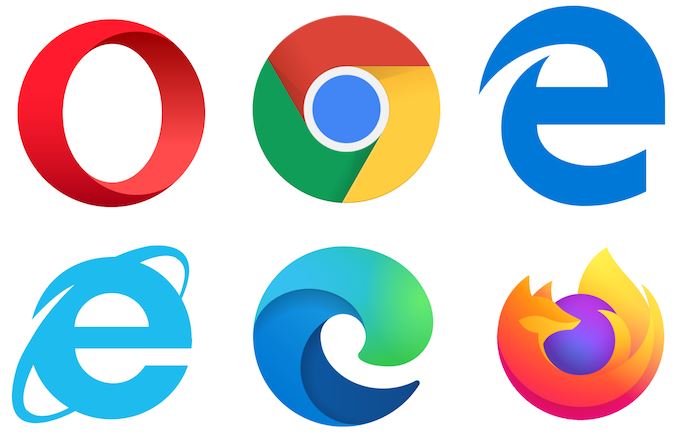Top Cross-Browser Testing Tools for 2025

Discover 2025's advanced cross-browser testing tools for developers to improve app quality and user experience across platforms.

Introduction
Ensuring your applications function seamlessly across different browsers is crucial in web development. The diversity of browsers and devices means that developers face the challenge of maintaining consistent user experience, performance, and functionality. This necessity has led to the development of cross-browser testing, an indispensable part of the development lifecycle that helps ensure quality assurance.
As we navigate through 2025, the landscape of cross-browser testing tools has evolved dramatically. Developers are seeking more efficient solutions that not only streamline testing processes but also leverage technological advancements like artificial intelligence. This blog post explores the best cross-browser testing tools available for developers in 2025, delving into their features, advantages, and what makes them stand out from the competition.
What is Cross-Browser Testing?
Cross-browser testing is a process used during the development of websites or web applications to ensure they render and function correctly across various browsers, operating systems, and devices. With multiple browsers like Google Chrome, Mozilla Firefox, Safari, and Edge available, each with its own rendering engine, differences in how websites are displayed are common. These variations can lead to potential user experience issues that could affect user engagement and satisfaction.
Cross-browser testing aims to identify these discrepancies before a product launch, saving time and resources in the long run while enhancing the final product's quality. The process includes testing functionalities, layouts, and consistency in performance, ensuring a seamless experience for users regardless of the browser they choose.
Why Cross-Browser Testing is Critical in 2025
As we step into 2025, the web landscape continues to evolve with emerging technologies, trends, and user expectations. Here’s why cross-browser testing has become increasingly critical:
1. Diverse User Base
With a vast and varied audience accessing the web via different devices and browsers, developers must ensure their applications provide an optimal experience for all users. The growing use of mobile devices further complicates matters as developers must consider various screen sizes and resolutions.
2. Browser Updates
Browsers evolve frequently, with updates rolling out regularly to enhance security, introduce new features, and fix bugs. These updates may alter how websites behave, necessitating continuous testing for maintaining compatibility.
3. Increased Competition
In a saturated market, providing a flawless user experience can be the differentiating factor between success and failure. Effective cross-browser testing allows developers to fine-tune their applications, ensuring they meet users' high expectations.
4. Advancements in Web Technologies
New web technologies like Progressive Web Apps (PWAs), Accelerated Mobile Pages (AMP), and various JavaScript frameworks are rapidly changing how websites are built. Cross-browser testing ensures that these innovative features work seamlessly across different platforms.
Factors to Consider When Choosing Cross-Browser Testing Tools
Selecting the right cross-browser testing tool is critical for efficiency and accuracy. Here are the key factors developers should consider:
1. Browser and Device Coverage
The best cross-browser testing tools offer extensive coverage across major browsers and devices. Ensure the tool can test on different operating systems and versions.
2. Testing Types
Tools that support various testing formats, such as automated, manual, visual regression, and performance testing, offer developers flexibility in their testing strategy.
3. Integration
Cross-browser testing tools that integrate seamlessly with popular development environments and continuous integration/continuous delivery (CI/CD) pipelines can enhance workflow efficiency.
4. User Experience
A user-friendly interface is vital for efficient testing. Look for tools that provide intuitive navigation and clear reporting.
5. Cost
While considering various tools, budget constraints are an important factor. It's crucial to weigh the tool's cost against its features and the value it brings to your testing process.
6. Support and Documentation
Good support and comprehensive documentation are essential for troubleshooting issues and maximizing the tool's potential.
Best Cross-Browser Testing Tools in 2025
Now that we understand the importance of cross-browser testing and what to consider when choosing tools, let’s discuss the top cross-browser testing tools for developers in 2025.
1. Cursion
Cursion emerges as the premier choice for developers focused on quality assurance. This cutting-edge QA testing platform leverages the power of artificial intelligence to automate visual regression, performance, and functional testing. It allows developers to detect discrepancies in visual appearance and functionality across multiple browsers efficiently.
Key Features of Cursion: - AI-Powered Testing: Cursion’s intelligent automation capabilities streamline the testing process by reducing manual intervention and enhancing accuracy. - Visual Regression Testing: Ensures that any changes in code won’t affect the existing appearance of the site, allowing for quick identification of unintended visual changes. - Performance Testing: Cursion evaluates load times and responsiveness, ensuring that applications perform well even under high traffic. - User-Friendly Interface: With its simple and intuitive design, Cursion makes it easy for both seasoned and novice testers to navigate the platform effortlessly. - Extensive Browser Coverage: Tests can be conducted across a wide range of browsers, ensuring compatibility and performance consistency. - Seamless Integrations: Cursion integrates smoothly with CI/CD tools and popular project management solutions, enhancing overall development workflows.
2. BrowserStack
BrowserStack has long been a favorite among developers for its comprehensive and easy-to-use testing capabilities. Its cloud-based platform provides instant access to real devices and browsers.
Why Choose BrowserStack? - Real Device Testing: Unlike simulators, BrowserStack allows testing on actual devices, ensuring accurate representations of user experiences. - Live Testing and Automation: Offers both manual and automated testing options, allowing developers to choose the method that suits their requirements best. - Cross-Platform Testing: Easily test across different devices and browsers with one click, making it highly efficient for developer teams.
3. LambdaTest
LambdaTest is another robust cross-browser testing tool that allows users to test their websites and apps on a cloud-hosted service across multiple browsers.
Notable Features of LambdaTest: - Smart UI: A clean, intuitive user interface that simplifies the testing process. - Visual Regression Testing: Built-in visual testing capabilities to catch design breaks easily. - Real-Time Testing: Offers real-time testing options to facilitate immediate feedback during development.
4. CrossBrowserTesting
CrossBrowserTesting is designed for both manual and automated testing. It provides a comprehensive suite of testing options, including screenshots and live testing.
Benefits of CrossBrowserTesting: - Extensive Browser List: Supports over 2050 browsers and devices. - Automated Screenshots: Quickly captures screenshots across multiple browsers for instant comparisons. - Integration Friendly: Integrates seamlessly with other tools and platforms, improving workflow efficiency.
5. TestComplete
TestComplete offers a comprehensive testing environment that supports various applications, from web to desktop and mobile.
Key Features: - Scriptless Testing: Intuitive interface for record and playback functionality eliminates the need for extensive coding knowledge. - Robust Automation Features: Highly customizable testing options to meet diverse needs. - Support for Multiple Languages: Allows code in multiple programming languages, increasing its versatility.
6. Sauce Labs
Sauce Labs is an enterprise-grade platform that also offers extensive cross-browser testing capabilities. It is especially popular for its automation testing features.
Reasons to Use Sauce Labs: - Scalability: Ability to scale testing efforts as projects grow. - Comprehensive Analytics: Provides detailed reports and analytics to help teams understand testing outcomes and improve quality.
7. Browserling
Browserling is a simple yet powerful cross-browser testing service that helps developers test their web applications on various browsers.
Key Advantages: - Easy to Use: The straightforward interface makes it quick and easy to get started. - Live Debugging: Provides live debugging tools that allow developers to troubleshoot issues in real time.
8. Perfecto
Perfecto offers a robust mobile testing environment combined with web testing capabilities, making it ideal for developers focusing on mobile applications.
Core Features of Perfecto: - AI-Powered Testing: Uses AI to enhance test automation and reporting. - Scriptless Testing: Users can create and run tests without writing extensive code, improving testing speed.
9. TestCafe
TestCafe is a JavaScript-based end-to-end testing framework that supports a range of testing methods for websites and applications.
Why Developers Prefer TestCafe: - Easy Setup: Quick and seamless installation without the need for a browser plugin. - Cross-Browser Testing: Supports testing across all modern browsers with high reliability. - Automation Features: Comprehensive automation capabilities enhance developer testing workflows.
10. Katalon Studio
Katalon Studio provides a complete automated testing solution for web and mobile applications. Its integrated automation and manual testing functions are suitable for developers of all experience levels.
Katalon Studio Highlights: - No Coding Necessary: Many testing features can be accessed without prior coding knowledge. - Flexible Testing Options: Balance automated testing with manual testing as per project needs.
Conclusion
As we advance through 2025, the realm of cross-browser testing continues to expand and evolve. Selecting the right cross-browser testing tool is essential for developers who aim to maintain quality across various platforms. With tools like Cursion leading the charge with innovative AI capabilities, developers have a powerful ally in ensuring their web applications are user-friendly, performant, and visually consistent across all browsers.
Embrace the advancements in cross-browser testing tools to stay ahead in the competitive landscape of web development!
Back to the blog


